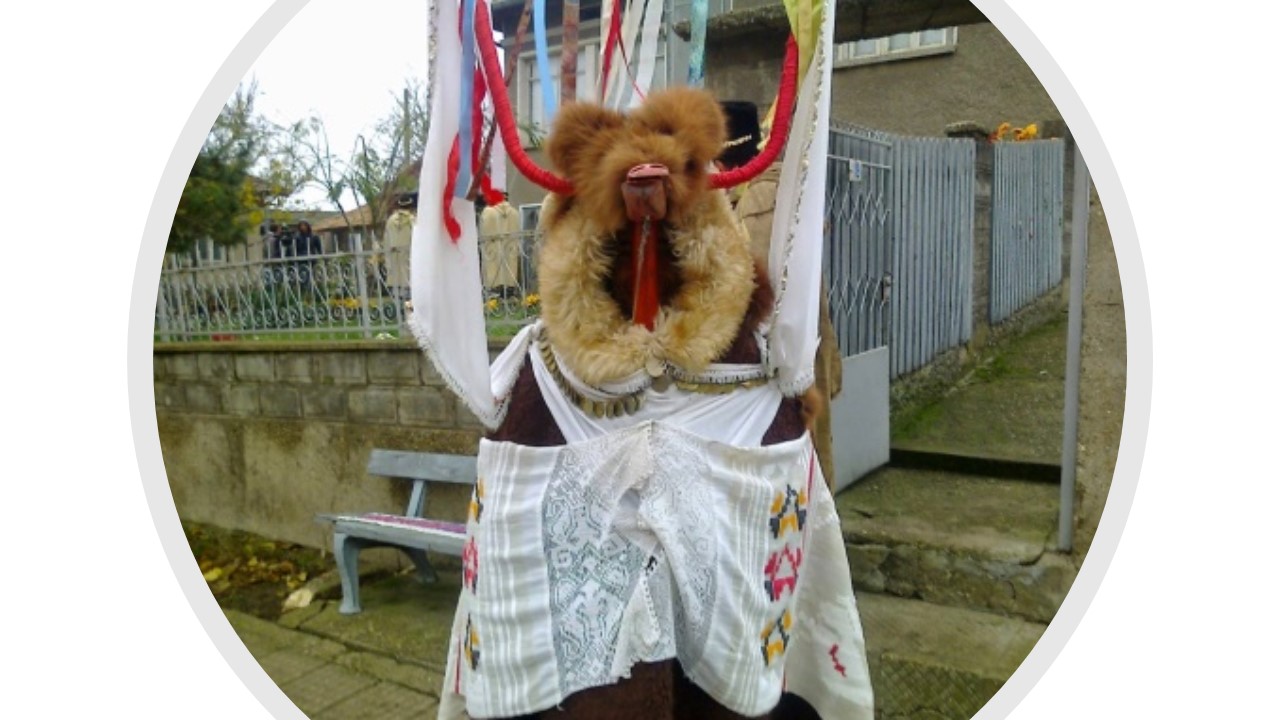DANUrB+ - Christmas Traditions in Bulgaria (Northeastern Bulgaria)
23-12-2020
In addition to the timeless traditions on Christmas Eve (the night before Christmas) to serve an odd number of only lean meals, Carolers singing their traditional songs all through the houses, perform the whole ritual of lighting and extinguishing the so-called “Badnik”, and many more, there are customs that are typical only for some parts of Bulgaria and they are like the top of the Christmas tree, with its authenticity - they complete all this diversity and enrich our cultural heritage, our present, and our future.
Christmas customs have come down to us from distant times and they have so much in common and still they are different as well. But whatever they are, there is always one goal, in the winter days of deprivation to brighten the day with wishes for health, fertility, joy and happiness.
The “Brazaya” custom
“Brazaya” is an old and rare custom that is performed on Christmas Eve in some villages along the Danube in Eastern Bulgaria – Ruse, Tutrakan and Silistra. The custom is named after the person who performs it – a masked man, reminiscent with his clothes of a mythical creature, decorated with woolen wrists, multicolored ribbons, bells, and sequins.
Although each settlement has given its handwriting in the decoration of the brazaya and in the performance of the ritual, the custom looks more similar than different. The brazaya himself, in most settlements, starts from the local church. He is accompanied by a group of several bachelors and a fiddler. Together they tour pre-designated houses, where the brazaya performs a ritual dance to chase away evil spirits and purify the houses. If he meets lazy maidens in their homes, the brazaya spreads the rumor about them all over the village – that they are clumsy and idle. On the contrary, he praises and blesses the hardworking ones. The rich decoration of the brazaya influences the audience through the dance, with the click of the mask and with the reflected light by the sequins. After the dance is over, the host serves the brazayas wine and the hostess gives them towels for presents, which they attach to their clothes. She also gives them a bun to which a boxwood bouquet and a lighted candle are attached. They are also given bread and meat. Finally, the host gives them money, sends them to the gate and invites them to come again next year. In some villages it is customary for the girl in the house to decide who will play the brazaya. The girls decorate the brazaya with wreaths, flowers, pretzels, put small coins between his jaws. The purpose is to fill these homes with joy and happiness in the dark and cold winter days.
Photo source: https://utroruse.com
In brazaya some see a connection with the Ukrainian and Moldavian “Melanka” in which men, dressed in women’s clothes, go around with the carolers. They make traditional wishes for fertility and health, dance, tell funny stories. In the town of Byala the custom is known as “Brazay-koska”. This tradition is like the ritual character in the masquerade games of the Turkish population in Bulgaria – “Camila”, or also known as “Jamal”.
Up to this day in the Silistra village, Garvan, the Brazaya custom is celebrated and completely authentic because it has not been updated or changed in any way over the years. There are several settlements in which there is information that both in the past and in our days Brazaya is performed – the village of Dobrotitsa, the village of Batin and others. In Ruse the brazaya is celebrated annually on the town square at Christmas Eve. Under the sounds of carol songs, the brazaya performs his dance to purify the houses and chase away the evil.

Photo source: http://jordansilistra.blogspot.com
The roots of the Brazaya custom date back to the ancient times when the rites and rituals of fertility and the expulsion of evil forces were often performed. Over the years old traditions have layered on local Christmas customs. The main purpose of the rituals at this time of the year is always the hope for health and rich harvest. Once it was a purely pagan custom, but nowadays, entering the church, the intention to join the Christian calendar is evident.
